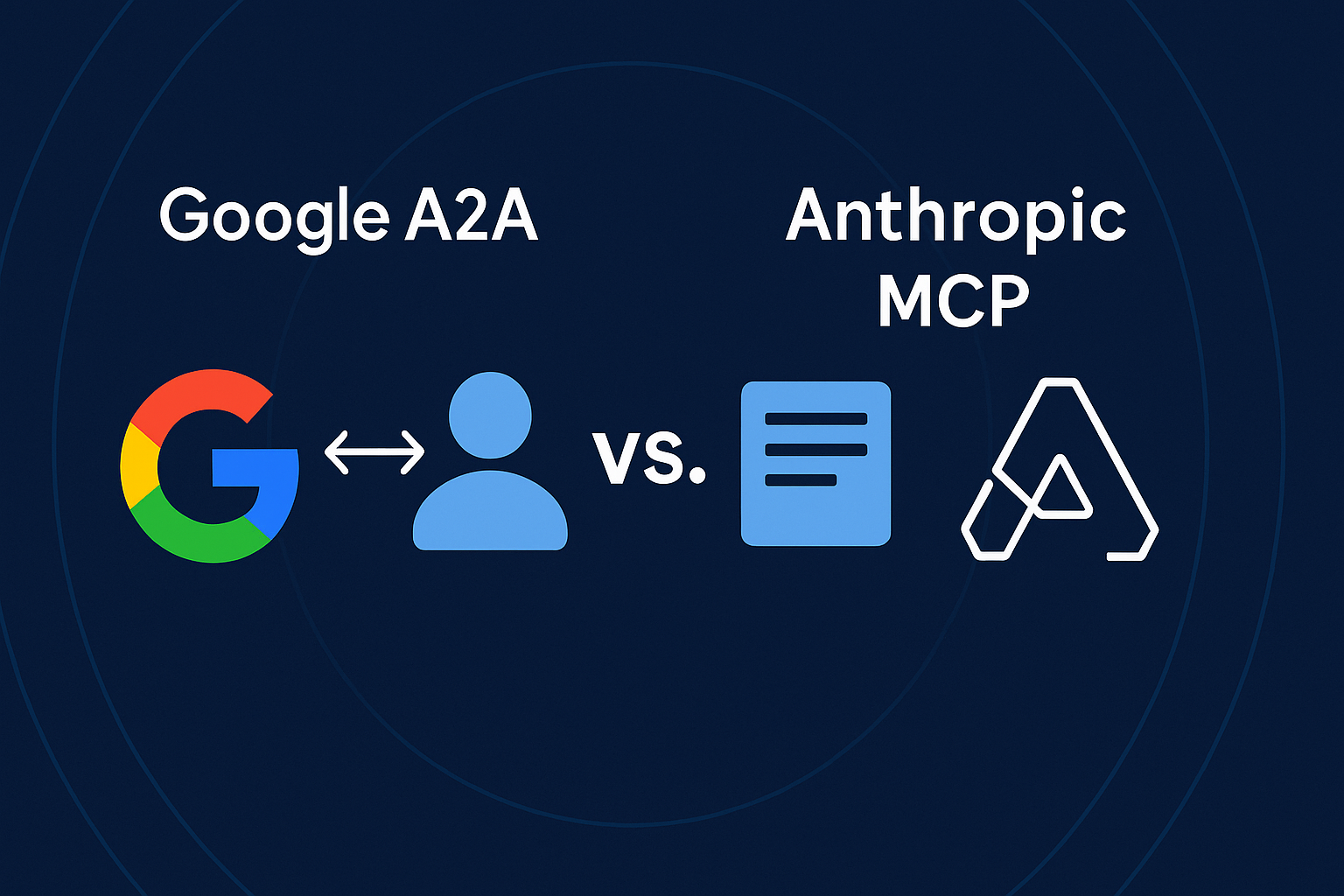The Rise of Agentic AI
In today’s fast-paced and tech-driven landscape, artificial intelligence is taking a bold new step into a world of autonomy and interconnectivity. One of the most exciting developments in this space is the rise of agentic AI—autonomous systems that can perform tasks, make decisions, and even collaborate with other agents or tools. According to Forbes, agentic AI represents a fundamental shift in how machines will operate and communicate in the future.
To support this new wave, two foundational protocols have been introduced: Google’s Agent2Agent Protocol (A2A) and Anthropic’s Model Context Protocol (MCP). These protocols are revolutionizing the way AI systems interact—with each other and with the wider ecosystem of tools and services. Let’s dive into what they do, how they work, and why you should care.
What is Google’s Agent2Agent (A2A) Protocol?
Introduced during Google Cloud Next 2025, the Agent2Agent Protocol (A2A) is an open standard that enables direct communication and interoperability between AI agents. Designed by Google, A2A is meant to transcend platform boundaries, allowing agents from different vendors or frameworks to discover each other and collaborate seamlessly.
At the heart of A2A lies the concept of “agent cards.” These are structured descriptions of each agent’s capabilities, making it easy for other agents to understand what they can do. All communication is task-oriented, meaning agents speak to each other in a way that revolves around solving specific problems or executing particular workflows. Security is baked in at every layer, with OAuth and encrypted messaging channels ensuring data integrity and user privacy.
Perhaps one of the most powerful aspects of A2A is its ecosystem. With support from major tech players like Atlassian, Box, Salesforce, and SAP, the protocol is backed by a growing community intent on standardizing multi-agent communication. If you’re a developer or organization interested in building agentic systems, you can explore the A2A GitHub repository for a deeper technical overview.
What is Anthropic’s Model Context Protocol (MCP)?
While A2A focuses on agent-to-agent communication, Anthropic’s Model Context Protocol (MCP) is about empowering AI models to interface with external tools and data sources. It’s a universal framework—often described as the “USB-C” of AI—for enabling models to access APIs, databases, or custom-built tools during inference and decision-making.
MCP is based on a client-server architecture, where AI models act as clients and interact with external tools acting as servers. The communication is facilitated using structured JSON messages, allowing for dynamic interactions, including streaming responses and partial updates. One of MCP’s most significant strengths is its dynamic introspection feature, which lets models discover available resources in real-time—an essential functionality for any system that needs flexibility and adaptability.
Security is also a high priority with MCP. The protocol uses host-mediated authentication to ensure that only authorized interactions are permitted. This makes MCP particularly well-suited for environments where sensitive data is being accessed or manipulated by AI agents.
For developers and enterprises exploring MCP, Anthropic’s official documentation provides a well-detailed roadmap on how to get started with building AI tools that can “plug into” this intelligent ecosystem.
A2A vs. MCP: Understanding the Difference
Although A2A and MCP serve different layers of the AI communication stack, they are complementary rather than competitive. A2A is focused on enabling agent-to-agent collaboration, where agents can discover each other and work collectively toward solving complex tasks. In contrast, MCP is concerned with making tools, APIs, and databases easily accessible to those agents or AI models during task execution.
A2A uses a peer-to-peer architecture, whereas MCP follows a more traditional client-server model. The former is better suited for multi-agent coordination scenarios, such as an AI assistant coordinating between your calendar, email, and file management system. Meanwhile, MCP shines in single-agent settings where the model needs to interact with multiple backend tools, such as fetching medical records, running a code snippet, or querying a real-time database.
Both protocols emphasize security and standardization but do so in slightly different ways. A2A leans heavily on encrypted agent-to-agent communication and OAuth, while MCP incorporates host-based access control to ensure only permitted queries go through. If you’re working on agentic systems, you may find that using both protocols together offers the most flexibility and robustness.
Real-World Applications of A2A and MCP
The impact of these protocols is already being felt across industries. In enterprise environments, A2A is enabling large-scale automation by letting agents from different SaaS tools—such as Slack, Google Workspace, and Asana—communicate and complete tasks without human involvement. For example, a project management agent can delegate documentation work to a writing agent, or schedule meetings based on real-time calendar availability.
In healthcare, MCP is transforming how data is accessed. AI models can now retrieve patient records, analyze lab results, and recommend treatment—all by tapping into specialized tools and databases via the MCP framework. This makes diagnosis and treatment faster and more accurate.
In the world of e-commerce, both protocols are being used to power intelligent shopping assistants. An agent might use A2A to chat with recommendation engines, inventory systems, and pricing tools, while using MCP to query real-time customer behavior data from analytics platforms like Mixpanel or Google Analytics.
In finance, the secure nature of MCP makes it ideal for fraud detection. AI models can simultaneously pull transaction data, behavioral risk profiles, and real-time security alerts from different sources, making faster and more precise decisions.
To explore how AI agents are already changing industries, check out this overview of AI agent use cases.
Explore More With AiMystry
At AiMystry, we’re passionate about making artificial intelligence accessible, actionable, and understandable. Whether you’re a tech-savvy developer, a curious founder, or an executive seeking to integrate AI into your organization, our content provides deep dives into the latest protocols, innovations, and breakthroughs in AI.
From explainer blogs and how-to guides to curated news and product insights, AiMystry is your go-to destination for everything related to AI systems, multi-agent collaboration, autonomous protocol design, and much more.
Final Thoughts
The introduction of Google’s A2A and Anthropic’s MCP signals a new era in AI development. These protocols provide the foundational plumbing that allows AI systems to communicate, collaborate, and connect with the broader digital world.
For developers and organizations looking to future-proof their AI infrastructure, understanding and implementing A2A and MCP can unlock new levels of automation, security, and innovation. As agentic AI continues to grow, these protocols will become indispensable tools in building intelligent, interconnected systems.
For more expert insights and resources, don’t forget to explore AiMystry—where we decode the future of AI, one breakthrough at a time.




